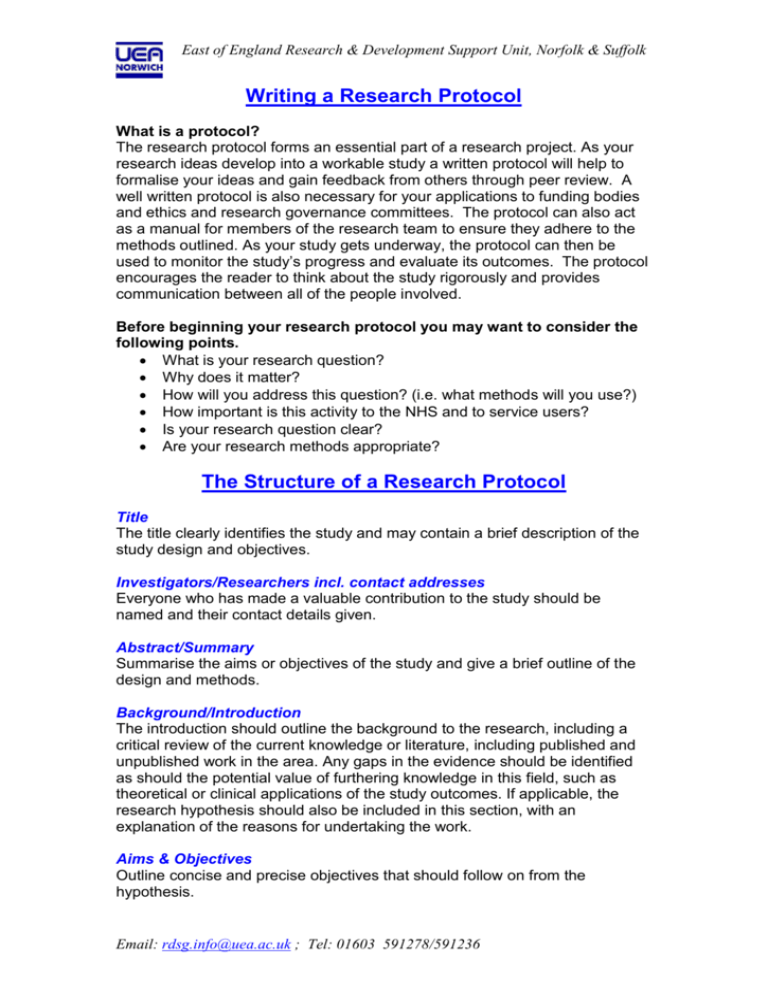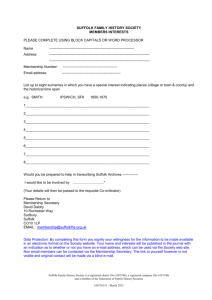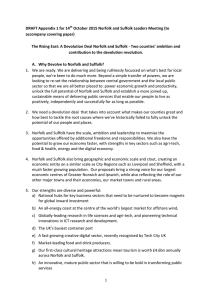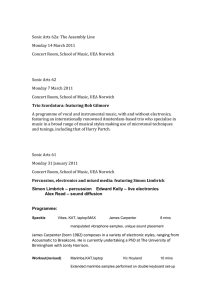writing a research protocol
advertisement

East of England Research & Development Support Unit, Norfolk & Suffolk Writing a Research Protocol What is a protocol? The research protocol forms an essential part of a research project. As your research ideas develop into a workable study a written protocol will help to formalise your ideas and gain feedback from others through peer review. A well written protocol is also necessary for your applications to funding bodies and ethics and research governance committees. The protocol can also act as a manual for members of the research team to ensure they adhere to the methods outlined. As your study gets underway, the protocol can then be used to monitor the study’s progress and evaluate its outcomes. The protocol encourages the reader to think about the study rigorously and provides communication between all of the people involved. Before beginning your research protocol you may want to consider the following points. What is your research question? Why does it matter? How will you address this question? (i.e. what methods will you use?) How important is this activity to the NHS and to service users? Is your research question clear? Are your research methods appropriate? The Structure of a Research Protocol Title The title clearly identifies the study and may contain a brief description of the study design and objectives. Investigators/Researchers incl. contact addresses Everyone who has made a valuable contribution to the study should be named and their contact details given. Abstract/Summary Summarise the aims or objectives of the study and give a brief outline of the design and methods. Background/Introduction The introduction should outline the background to the research, including a critical review of the current knowledge or literature, including published and unpublished work in the area. Any gaps in the evidence should be identified as should the potential value of furthering knowledge in this field, such as theoretical or clinical applications of the study outcomes. If applicable, the research hypothesis should also be included in this section, with an explanation of the reasons for undertaking the work. Aims & Objectives Outline concise and precise objectives that should follow on from the hypothesis. Email: rdsg.info@uea.ac.uk ; Tel: 01603 591278/591236 East of England Research & Development Support Unit, Norfolk & Suffolk Study Design & Methods Study Design. What study design is most appropriate to answer your particular research question? For more information regarding study design please see our fact sheet on research strategies. Setting. Where will the research take place? Your study may take place in a number of different sites, or you may be visiting patients in their homes. You need to address any practical issues involved, such as safety procedures when doing home visits. Subjects/Patients. Detailed information regarding your subjects should be given. For example, describe the study population, including a rationale of why they were chosen. Describe the methods by which subjects will be identified and recruited and what inclusion & exclusion criteria will be used. You will need to justify your sample size and state whether sample size calculations have been used. It may also be necessary to describe the criteria for participation or completion of the study, participant retention strategies and withdrawal criteria. If a control group is required as is mostly the case, don’t forget to add it to the protocol. Randomisation methods. Some research strategies, such as case control studies or randomised control studies, require a random allocation of patients to the different experimental groups or interventions. You will need to explain what randomisation methods you will use. Methods of assessment or measurement. What data will be collected and why. For example how will you measure your participants quality of life, what instruments will you use and are they the most appropriate? If you are using any equipment it should be clearly described. Outcome measures/objectives. The measurement outcomes used to support or reject the hypotheses can be stated and separated into primary and secondary outcomes. For example, primary outcomes or endpoints are most important to your hypothesis, there may be only 1 or 2. Secondary outcomes may provide some support to the hypothesis, but without the primary outcomes they could not confirm the hypothesis. Interventions (if applicable). Not all studies will involve any interventions, but if yours does a description of the study intervention should be provided. If you are giving a treatment or investigation, the dose, timing, method of providing, administering and receiving the treatment should be detailed. All necessary safeguards and potential risks should be made clear, including the methods by which intervention will be monitored. Data Collection, Management & Analysis Explain how the data will be collected and managed and who will have access to it. The method of the data analysis should also be specified and may include the following points: Method of data entry Plan of analysis, including assumptions of analysis Email: rdsg.info@uea.ac.uk ; Tel: 01603 591278/591236 East of England Research & Development Support Unit, Norfolk & Suffolk Data analysis package Presentation of demographic and outcome data summaries Planned presentation of the data, i.e. graphs, tables, figures Study Administration & Ethical Issues Outline the methods by which the patient/subject’s interests will be safeguarded. For example, the process of risk limitation, how you will maintain confidentiality or anonymise patient’s data and how you will monitor any adverse side effects State whether there has been user involvement in design of the study. If applicable, state whether you have followed the Clinical trials directive, and you have Regulatory Authority Approval You should also state who will provide indemnity in case of harm to your participants through negligence? If applicable, the protocol should clearly state who is sponsoring the research study and what interest they have in its outcome. It is also necessary to state whether the sponsors are to provide indemnity in the case of negligent harm to participants. Resource Requirements The resource implications to the host organisation and any other involved departments should be defined in this section. In addition you must outline the timetable/schedule of the research and all costs. Study Plan You may wish to include a study plan, showing a brief summary or flow chart of the order, site and timing of all study procedures. It may also be useful to include consent forms & participant information in appendices. Supervision Where applicable, the protocol should name the individual(s) who will supervise the research project and the intended arrangements for the supervision. Dissemination & Outcome How will the study’s findings be made available? State whether you intend to publish or present the findings. Any implications for future practice and patient care should also be suggested. Suggested Reading Bowling, A, 2002, Research methods in health: investigating health and health services research. Open University Press Davies, T.O., 2002. Health services research: avoiding common pitfalls. Quay Books. Boynton, P, 2004. The research companion: a practical guide for the social and health sciences. Hove, psychology press Email: rdsg.info@uea.ac.uk ; Tel: 01603 591278/591236 East of England Research & Development Support Unit, Norfolk & Suffolk Email: rdsg.info@uea.ac.uk ; Tel: 01603 591278/591236















